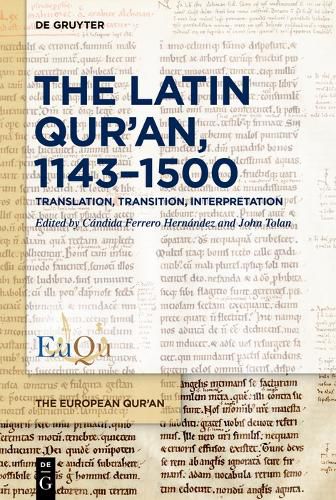Readings Newsletter
Become a Readings Member to make your shopping experience even easier.
Sign in or sign up for free!
You’re not far away from qualifying for FREE standard shipping within Australia
You’ve qualified for FREE standard shipping within Australia
The cart is loading…






This title is printed to order. This book may have been self-published. If so, we cannot guarantee the quality of the content. In the main most books will have gone through the editing process however some may not. We therefore suggest that you be aware of this before ordering this book. If in doubt check either the author or publisher’s details as we are unable to accept any returns unless they are faulty. Please contact us if you have any questions.
In 1143 Robert of Ketton produced the first Latin translation of the Qur'an. This translation, extant in 24 manuscripts, was one of the main ways in which Latin European readers had access to the Muslim holy book. Yet it was not the only means of transmission of Quranic stories and concepts to the Latin world: there were other medieval translations into Latin of the Qur'an and of Christian polemical texts composed in Arabic which transmitted elements of the Qur'an (often in a polemical mode).
The essays in this volume examine the range of medieval Latin transmission of the Qur'an and reaction to the Qur'an by concentrating on the manuscript traditions of medieval Qur'an translations and anti-Islamic polemics in Latin. We see how the Arabic text was transmitted and studied in Medieval Europe. We examine the strategies of translators who struggled to find a proper vocabulary and syntax to render Quranic terms into Latin, at times showing miscomprehensions of the text or willful distortions for polemical purposes. These translations and interpretations by Latin authors working primarily in twelfth- and thirteenth-century Spain were the main sources of information about Islam for European scholars until well into the sixteenth century, when they were printed, reused and commented. This volume presents a key assessment of a crucial chapter in European understandings of Islam.
$9.00 standard shipping within Australia
FREE standard shipping within Australia for orders over $100.00
Express & International shipping calculated at checkout
This title is printed to order. This book may have been self-published. If so, we cannot guarantee the quality of the content. In the main most books will have gone through the editing process however some may not. We therefore suggest that you be aware of this before ordering this book. If in doubt check either the author or publisher’s details as we are unable to accept any returns unless they are faulty. Please contact us if you have any questions.
In 1143 Robert of Ketton produced the first Latin translation of the Qur'an. This translation, extant in 24 manuscripts, was one of the main ways in which Latin European readers had access to the Muslim holy book. Yet it was not the only means of transmission of Quranic stories and concepts to the Latin world: there were other medieval translations into Latin of the Qur'an and of Christian polemical texts composed in Arabic which transmitted elements of the Qur'an (often in a polemical mode).
The essays in this volume examine the range of medieval Latin transmission of the Qur'an and reaction to the Qur'an by concentrating on the manuscript traditions of medieval Qur'an translations and anti-Islamic polemics in Latin. We see how the Arabic text was transmitted and studied in Medieval Europe. We examine the strategies of translators who struggled to find a proper vocabulary and syntax to render Quranic terms into Latin, at times showing miscomprehensions of the text or willful distortions for polemical purposes. These translations and interpretations by Latin authors working primarily in twelfth- and thirteenth-century Spain were the main sources of information about Islam for European scholars until well into the sixteenth century, when they were printed, reused and commented. This volume presents a key assessment of a crucial chapter in European understandings of Islam.